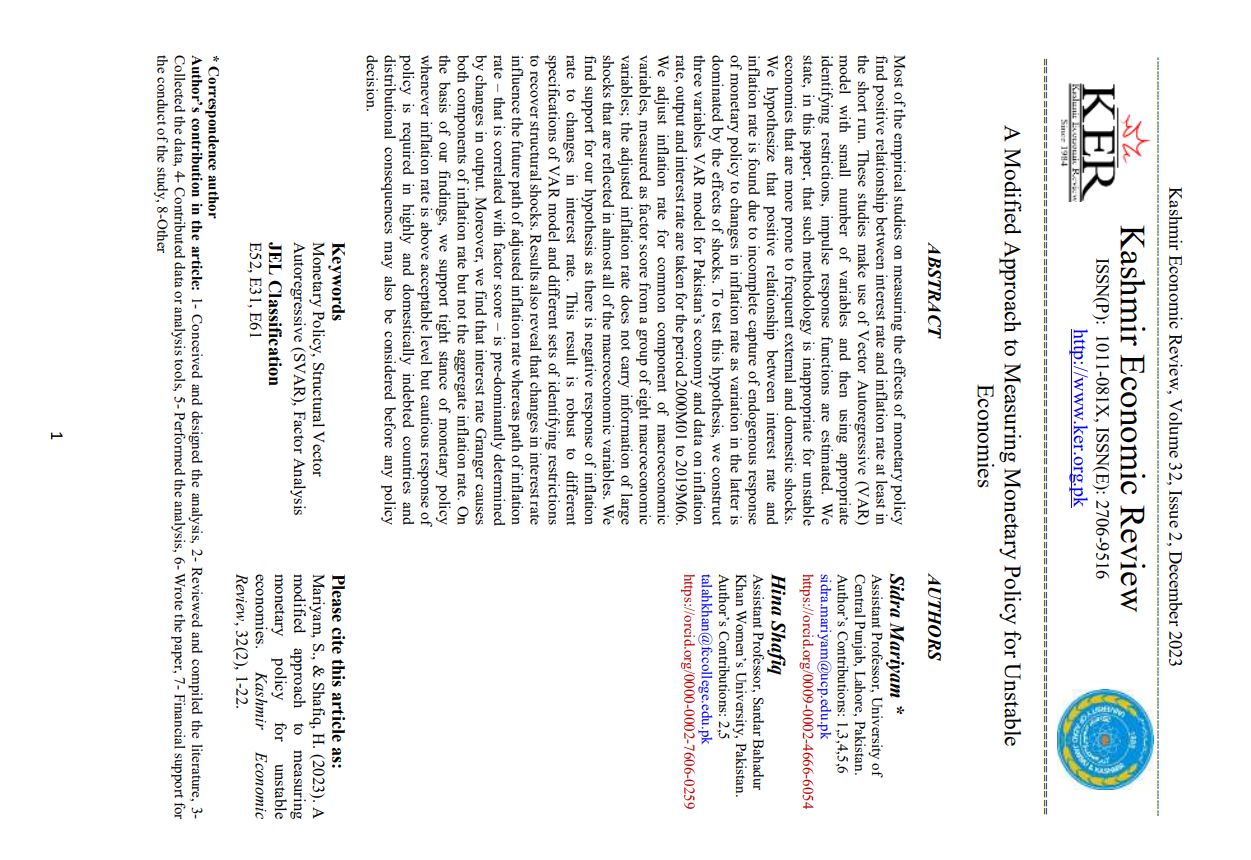A Modified Approach to Measuring Monetary Policy for Unstable Economies
Contenido principal del artículo
Resumen
Most of the empirical studies on measuring the effects of monetary policy
find positive relationship between interest rate and inflation rate at least in
the short run. These studies make use of Vector Autoregressive (VAR)
model with small number of variables and then using appropriate
identifying restrictions, impulse response functions are estimated. We
state, in this paper, that such methodology is inappropriate for unstable
economies that are more prone to frequent external and domestic shocks.
We hypothesize that positive relationship between interest rate and
inflation rate is found due to incomplete capture of endogenous response
of monetary policy to changes in inflation rate as variation in the latter is
dominated by the effects of shocks. To test this hypothesis, we construct
three variables VAR model for Pakistan’s economy and data on inflation
rate, output and interest rate are taken for the period 2000M01 to 2019M06.
We adjust inflation rate for common component of macroeconomic
variables, measured as factor score from a group of eight macroeconomic
variables; the adjusted inflation rate does not carry information of large
shocks that are reflected in almost all of the macroeconomic variables. We
find support for our hypothesis as there is negative response of inflation
rate to changes in interest rate. This result is robust to different
specifications of VAR model and different sets of identifying restrictions
to recover structural shocks. Results also reveal that changes in interest rate
influence the future path of adjusted inflation rate whereas path of inflation
rate – that is correlated with factor score – is pre-dominantly determined
by changes in output. Moreover, we find that interest rate Granger causes
both components of inflation rate but not the aggregate inflation rate. On
the basis of our findings, we support tight stance of monetary policy
whenever inflation rate is above acceptable level but cautious response of
policy is required in highly and domestically indebted countries and
distributional consequences may also be considered before any policy
decision.
Detalles del artículo

Esta obra está bajo una licencia internacional Creative Commons Atribución-CompartirIgual 4.0.

